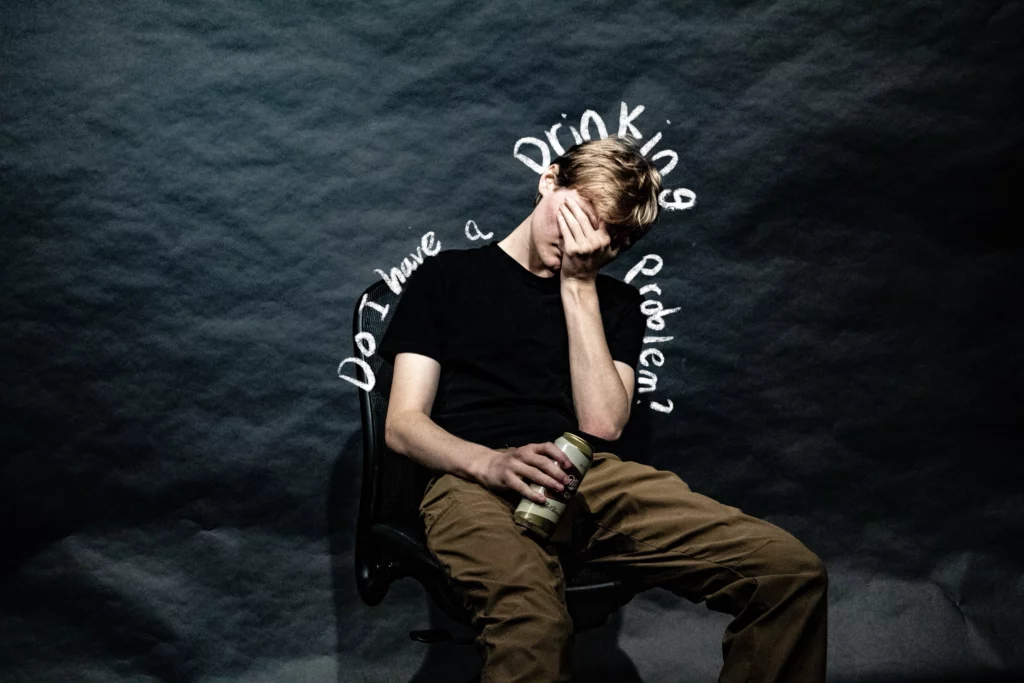Drinking has become a cultural norm in the Midwest. But that doesn’t mean it’s not a problem.

When looking into the top drunkest states in America, you might expect to find the usual suspects: those with bustling metropolises where the nightlife never sleeps, or tourist destinations where cocktails flow freely—looking at you, Vegas.
Yet, nestled among these expected contenders, lies an unexpected challenger—the Midwest. According to a 2023 study on excessive drinking compiled by the Robert Wood Johnson Foundation and University of Wisconsin Population Health Institute and analyzed by the site 24/7 Tempo, seven of the Top 10 drunkest states are in the Midwest. The top 3 being Wisconsin, Iowa, and South Dakota, with North Dakota, Minnesota, Nebraska, and Illinois being not too far behind. The Midwest definitely can throw down.
The Health Effects of Alcohol
Excessive drinking is a serious issue in the Midwest. Alcoholism is responsible for 95,510 deaths in the U.S. each year, according to medical provider Caron. For many individuals grappling with mental health challenges, alcohol can serve as both a coping mechanism and a double-edged sword.
When you drink alcohol, it alters how your brain works, changing the balance between two types of messaging chemicals, called neurotransmitters. It also affects dopamine and serotonin levels, which play key roles in regulating mood and pleasure.
“Excessive alcohol consumption can disrupt this delicate balance, exacerbating mental health symptoms and perpetuating a cycle of dependence,” says Dr. Tina Christine Chasek associate professor and Chair of the Counseling Department at the University of Nebraska Omaha.
Essentially, alcohol slows down your brain by either making the calming messages stronger or reducing stimulating messages. It can also do a bit of both. In adults, this contributes to reduced reaction times and impairing your judgment.
In developing adolescents, though, this becomes especially dangerous. According to the Substance Abuse and Mental Health Services Administration, individuals aged 12 to 20 are 15.47% of binge drinkers in the Midwest. While adolescents and young adults drink less frequently than older age groups, their drinking episodes tend to involve consuming larger quantities of alcohol.
“It’s more prone for injury and harm to themselves and others drinking when they’re underage,” says Maureen Busalacchi, director of Wisconsin Alcohol Policy Project (WisAPP).
Why in the Midwest?
Alcohol is frequently integrated into social events, becoming a customary element of many gatherings and celebrations. “There’s not a whole lot that happens [in the Midwest] that doesn’t include some form of substance,” Chasek says.
Culture plays a significant role in the prevalence of alcoholism in the Midwest.
In the early 19th century, many German, Polish, and Irish immigrants settled in the Upper Midwest. Beer drinking wasn’t just a pastime—it was a cultural norm.E, especially among Germans, who are renowned for their festive drinking, particularly during March and October celebrations and numerous other occasions throughout the year.
The German-American population remains substantial in the Midwest. According to the World Population Review, they make up over 30% of the population in many Midwestern states.
“I think the current cultural attitude towards alcohol in the Midwest is that it is widely accepted,” says Nick Shell, director of Community Standards at Drake University in Des Moines. “Alcohol is part of many family and holiday traditions, sporting events, and just relaxing evenings.”
But climate also may alsocontribute influence drinking habits in the Midwest. As mental health factors intertwine with alcohol consumption patterns, it’s essential to recognize the heightened risk of Seasonal Affective Disorder in the Midwest. The region’s long, harsh winters can exacerbate feelings of depression and isolation, contributing to alcohol misuse as individuals seek distraction from these seasonal challenges.
“Nobody wants to talk about it, so that makes it really hard, and I think that’s why it’s hard in the Midwest because we operate a lot on that moral model,” Chasek says.
Especially in small, rural towns in the Midwest. It’s socially understood, there are things you talk about and things you don’t.
“I think that’s where it becomes even harder in rural areas because they feel like they’re invading somebody’s privacy in a way,” Chasek says
Agriculture vs. Alcohol
As we say in the corn capitol, Busch Light is Iowa water. That’s true even for those that grow the corn. The Midwest is the agricultural capital of the country—farmers make up one-third of the population according to Slate. The cultural acceptance of alcohol extends even to the agricultural sector.
Dr. Chasek believes a significant number of farmers and agricultural workers lack awareness regarding their alcohol consumption habits, which can impact their mental well-being, especially considering the demanding nature of their work.
“We’ve got to educate or somehow give people better ways to deal with the stress and the anxiety that comes along with being in agriculture, because there’s no workplace wellness [policies] that are teaching them,” Chasek says.
Moreover, the connection between brewers and farmers adds another layer to the alcohol consumption landscape in the Midwest, particularly in states like Wisconsin. The brewing industry relies on agricultural products like hops and barley, which are often grown locally. According to Statista, the alcohol industry generates billions of dollars in revenue annually in states such as Wisconsin, Illinois, and Minnesota. While this economic boom creates jobs and drives tourism, it also fuels the prevalence of alcohol consumption and related issues in the region.
“Think about the Budweiser campaign that they targeted directly at farmers like the beer can that has the corn growing on it…Budweiser is for farmers,” Chasek says.
Organizations like the International Association of Alcohol and Drug Counselors and Wisconsin Alcohol Policy Project are trying to modify the message. While Budweiser might be for farmers, it should still be enjoyed in moderation.
“By working together and challenging existing norms, we can create a culture where alcohol is enjoyed responsibly without sacrificing the well-being of our communities,” Busalacchi says.
Once even one of the seven Midwestern states drops off the Top 10 of drunkest states in America, we’ll know that message is getting through.
